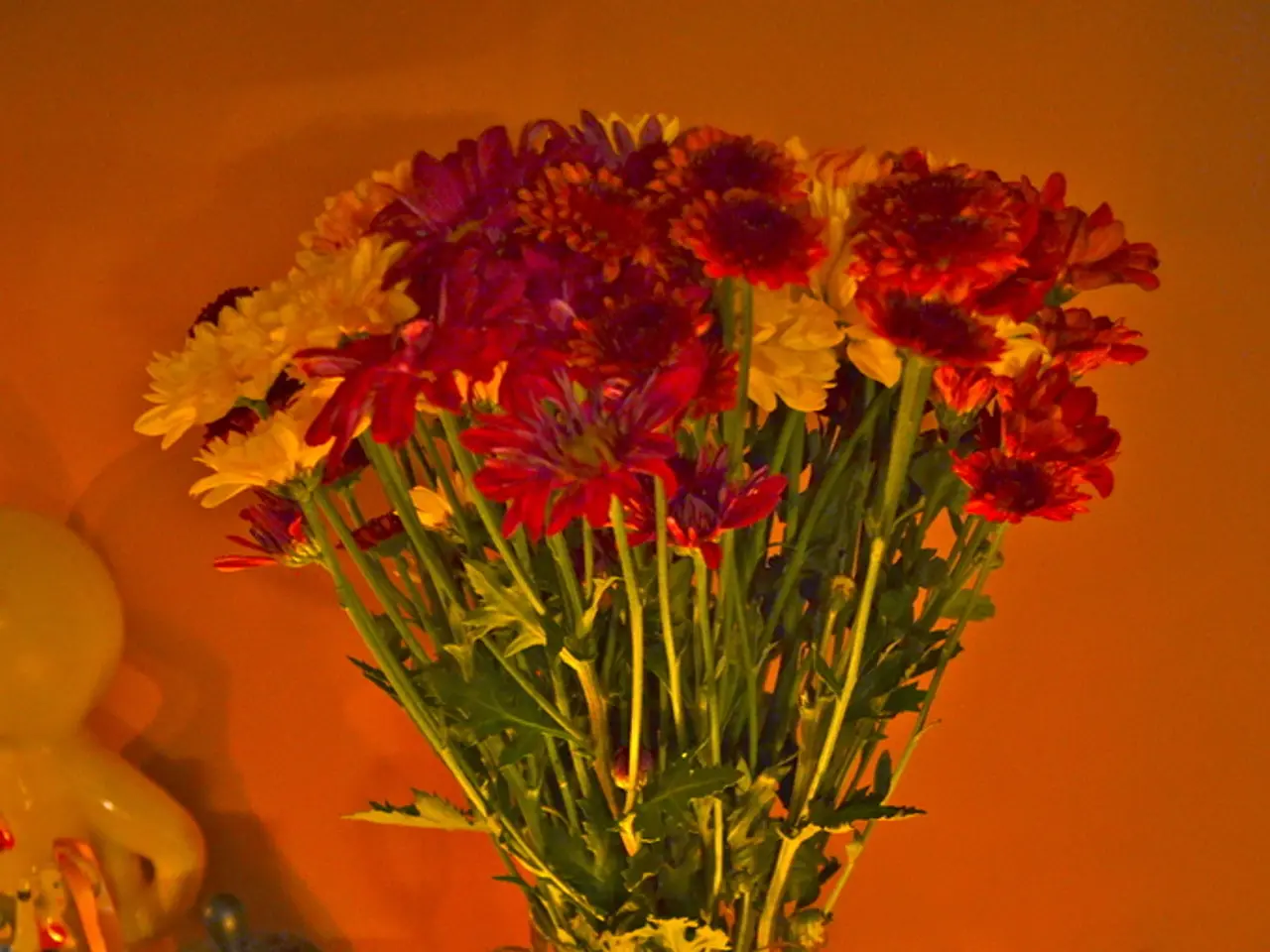Guide for creating a magical fairy garden in a terrarium, suitable for both children and adults
In this engaging and educational project, children can learn the basics of horticulture while unleashing their creativity with a DIY fairy garden terrarium. This enchanting miniature ecosystem is simple to create, using a mix of natural materials, miniature decorations, and a clear container.
**Materials Needed:** - A clear container or planter (glass jar, basin, old bowl, or shallow planter) - Small rocks or pebbles (for drainage and decoration) - Potting soil suitable for indoor plants or succulents - Small indoor plants or succulents (e.g., kalanchoe, cyclamen) - Two kinds of moss (for greenery and texture) - Miniature decorations like tiny swings, benches, fairy figurines, or mini ribbons - Willow twigs or strings (to make mini furniture if desired) - Scissors - Glue gun (optional, for securing decorations) - Water spray bottle
**Step-by-step Instructions:**
1. **Prepare the container** Clean the chosen container and add a layer of small rocks or pebbles at the bottom for drainage.
2. **Add potting soil** Fill the container with potting soil, ensuring it covers the roots of your plants.
3. **Plant the greenery** Dig small holes and plant your chosen small indoor plants or succulents on one side of the container. Add moss around the plants to cover the soil and create a lush, fairy-tale look.
4. **Create miniature settings** Place mini furniture like swings or benches beside the plants. You can make these yourself using willow twigs or buy them ready-made. Arrange small pebbles in patterns to create a patio or pathway.
5. **Decorate with fairy items** Add tiny fairy figurines, ribbons, mushrooms, or other small decorations to enhance the magical feel.
6. **Water lightly** Mist the soil lightly with water so it stays moist but not soggy.
7. **Find a sunny spot** Place the terrarium somewhere with indirect sunlight to keep plants healthy.
For a more themed approach, consider using plants that enjoy high humidity and are suitable for a closed terrarium, such as Ficus pumila, which roots up readily in humid conditions. Alternatively, you can explore creating a woodland-themed terrarium or even a gnome terrarium kit, which comes with easy-to-grow seeds and themed decorations.
To sculpt the substrate and create a slope for visual interest, consider using oven-hardening modeling clay to create fairy garden accessories. This project encourages kids to watch their mini ecosystem grow while enjoying a creative craft, making it an engaging way to learn about plants and nature on a small scale.
For further guidance, the article provides a Terrarium Plant Index and a Tiny Terrarium Plants Guide to help in choosing plants. Happy crafting, and may your fairy garden terrarium flourish!
In this creative and educational project, children can expand their home-and-garden knowledge by designing a DIY terrarium that incorporates gardening techniques and a fairy-tale lifestyle. To create a whimsical home for their fairy garden, they can choose plants, moss, and miniature decorations while sculpting the substrate for visual interest using oven-hardening modeling clay.




